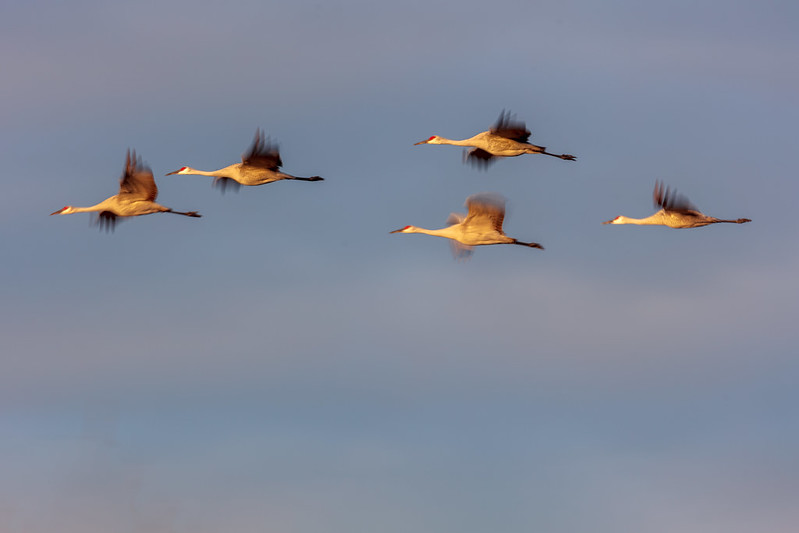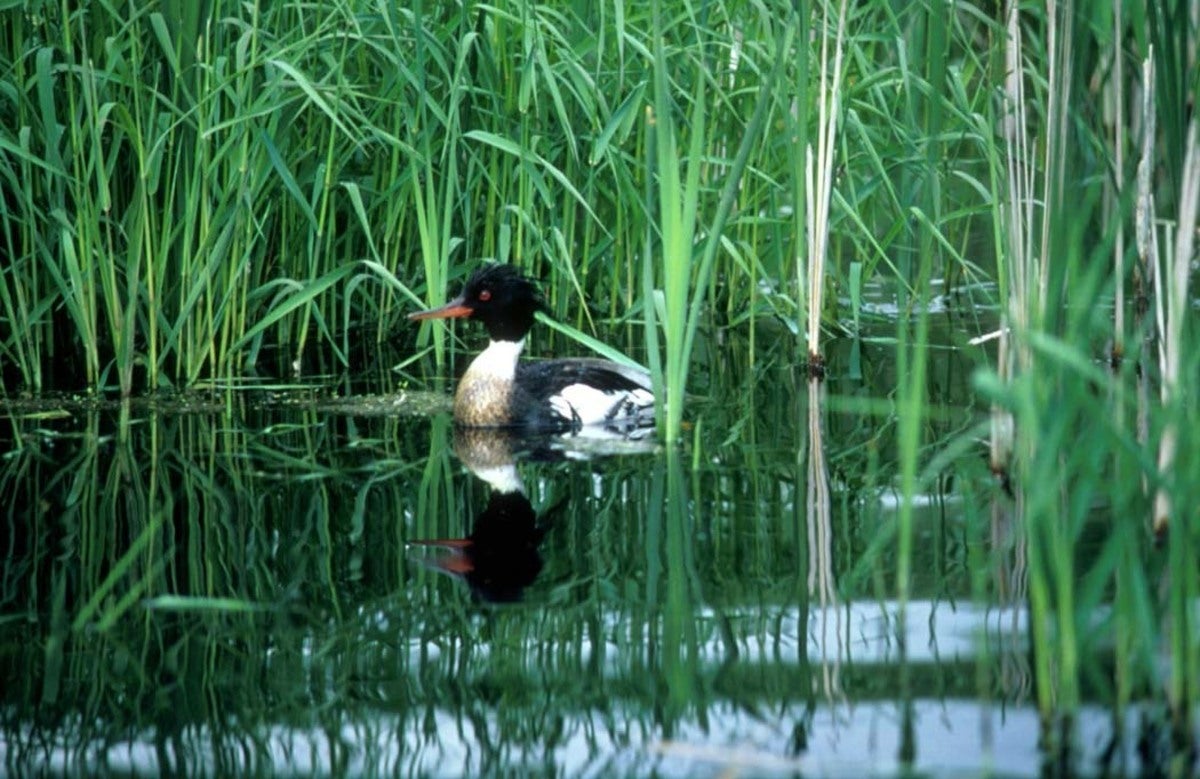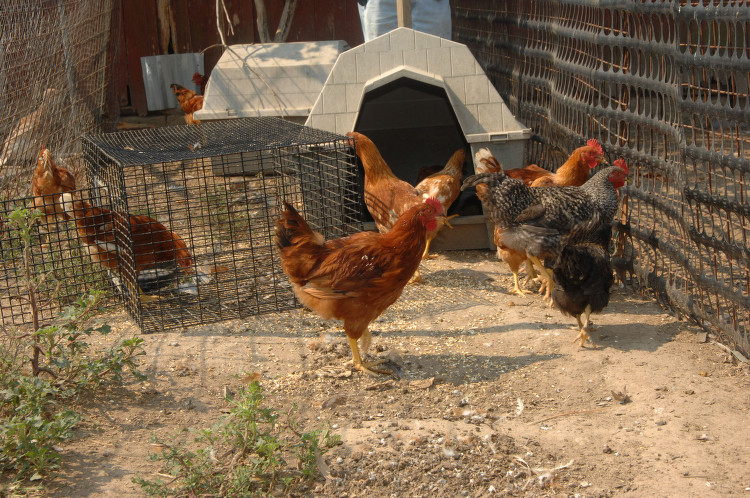The recent uptick in avian flu, caused by the highly pathogenic avian influenza virus that’s been circulating in North America since late 2021, is not only affecting industrial chickens, eggs and cattle.
It’s also harming wild birds. For those who become infected, the outcome is grim.
“Most of them die,” said veterinarian Diana Boon, director of conservation medicine at the International Crane Foundation in Baraboo. “And there’s really no cure or treatment for this disease except for supportive care.”
Stay informed on the latest news
Sign up for WPR’s email newsletter.
Staff at the foundation have taken precautions to protect the cranes at the facility, including limiting exposure to nearby waterfowl, like ducks, that can spread the virus. Staff are also taking precautions, including changing shoes, to make sure they don’t accidentally track the virus into crane exhibits.
They’ve seen recent reports of infected sandhill cranes in other states. Hundreds of sandhill cranes have died in Indiana, according to a Feb 15 article in the Chicago Tribune.
Numbers like that are concerning, Boon said.
“From 2021 through January, all the cases that were being reported were single cases, like a single sandhill crane,” Boon said.
And the disease isn’t just a risk to cranes.
Infected Canada geese and swans have been found in Dane, St. Croix, Wood, Brown and Racine counties this winter, according to the Wisconsin Department of Natural Resources.
As of Feb. 11, the flu was detected in nearly 12,000 wild birds and affected over 150 million poultry, according to the U.S. Centers for Disease Control and Prevention.
And the count for wild birds is likely vastly underreported, Boon said.
“A lot of the testing has really been focused on poultry,” Boon said.
How does it spread?
The virus can spread through bird droppings and saliva, but wild birds don’t always appear sick.
“Birds are masters at hiding that they’re sick,” Boon said.
If birds do show symptoms, they can include neurological signs such as swimming in circles, seizures, diarrhea, paralysis, respiratory distress and sudden death.
The Wisconsin Humane Society has changed its process for admitting birds to avoid spread of the avian influenza.
Not all birds are affected the same
Waterfowl, like ducks, geese and swans, tend to transmit the flu to others. Other birds at risk include raptors, crows, shorebirds and game birds.
Domestic poultry are especially vulnerable.
Songbirds are generally thought to be less at risk. They make up much fewer of the birds reported to organizations like the U.S. Department of Agriculture’s Animal and Plant Health Inspection Service.
“They just weren’t getting very many songbirds in so they haven’t been testing them,” Boon said.
How you can help
Wisconsinites can probably keep their bird feeders up, unless they have backyard chickens.
“The key intervention is to keep songbirds away from poultry,” according to a recommendation from the Cornell Lab of Ornithology. “It’s less important to keep songbirds away from each other.”
Southern Wisconsin Bird Alliance, formerly Madison Audubon, recommends taking feeders down if birds like wild turkeys, raptors or waterfowl frequent them.
A big way Wisconsinites can help is by cleaning their cars or changing their shoes to avoid tracking bird feces to new sites, such as on a bird watching trip or hunting outing, Boon said.
“You don’t want to be the person that takes a virus to a new location,” Boon said.
Endangered species could be at risk
“The good news, as of today, is that no whooping cranes have been reported to have been ill or found dead,” Boon said in a webinar on Feb 11.
But should this species get infected, whooping cranes don’t have the same population numbers as sandhill cranes, she said.
“We have volunteers that follow the whooping cranes all year-round,” Boon said.
Health officials say the risk of avian flu to the general public remains low.
Wisconsin Public Radio, © Copyright 2025, Board of Regents of the University of Wisconsin System and Wisconsin Educational Communications Board.





